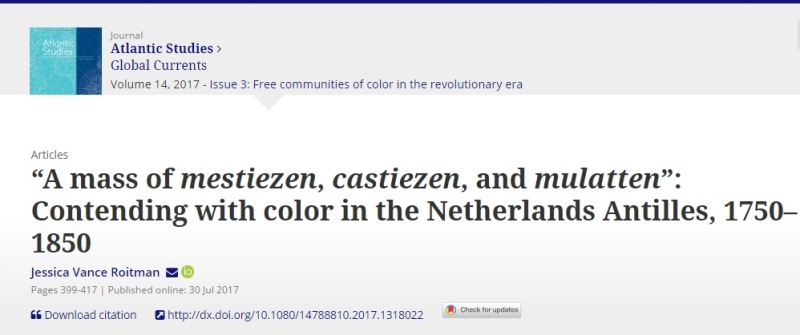
07 Aug New article by Jessica Roitman: “A mass of mestiezen, castiezen, and mulatten”
The article “A mass of mestiezen, castiezen, and mulatten: Contending with color in the Netherlands Antilles, 1750–1850″ in the journal Atlantic Studies shows that the boundaries between free people of color and enslaved people were blurry on the Netherlands Antilles from the mid-eighteenth through the mid-nineteenth centuries. This blurriness stemmed from a few factors. One factor was the predominantly urban slavery system, in which enslaved people were hired out to work for others. Urban slavery allowed for a relative degree of liberty for enslaved people to move about the islands, and a concomitant freedom to determine the course of their days – with whom they associated, where they worked, and, most importantly, the chance to earn money with which to buy their freedom, thereby increasing the number of freed people of color. This system, in turn, also made it harder to differentiate who was enslaved and who was free, thus scrambling entrenched categories between enslaved and free people. Another related factor was demographic. In part due to the possibility to buy freedom afforded by urban slavery, in part due to the recurring periods of economic malaise in the Netherlands Antilles, which made it attractive for slave owners to manumit their chattel, free people of color made up a large percentage of the total free population of the Dutch islands, sometimes more than 70%. However, unlike in the Spanish, British, and, especially, the French Atlantic, free people of color did not form a sort of intermediary middle class to any great degree, which further lessened the perceived difference between the two groups. Lastly, free people of color fell into a sort of “legal limbo” on the Dutch islands, with no clear distinction between the rights of the enslaved and the free.




No Comments